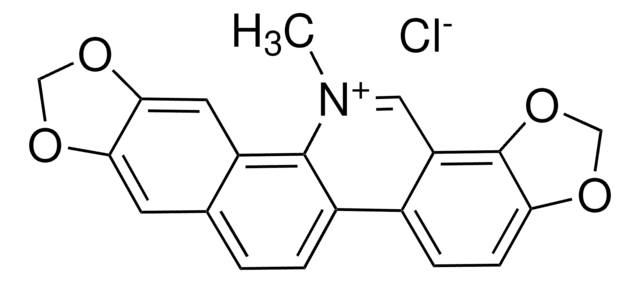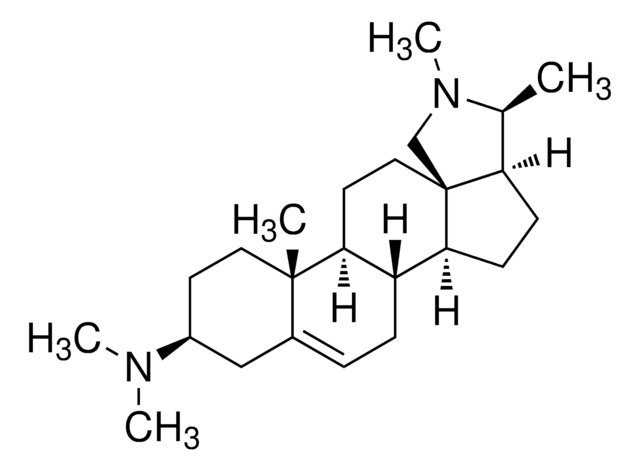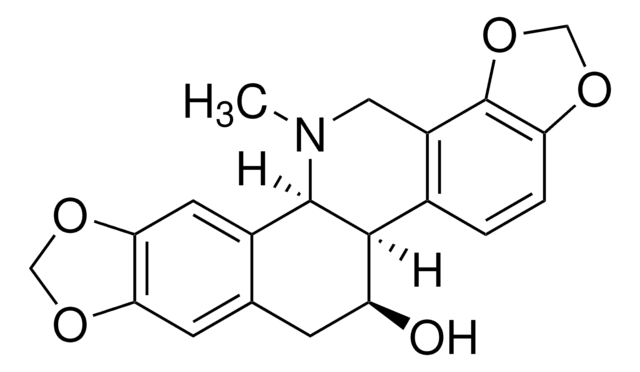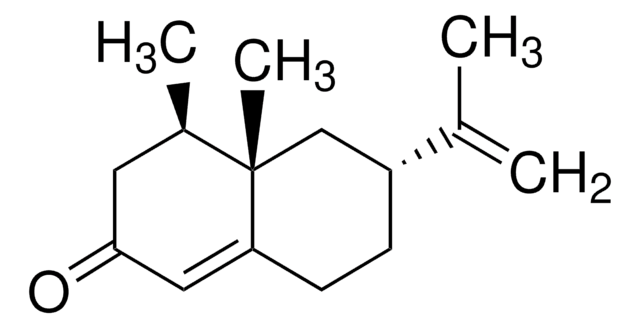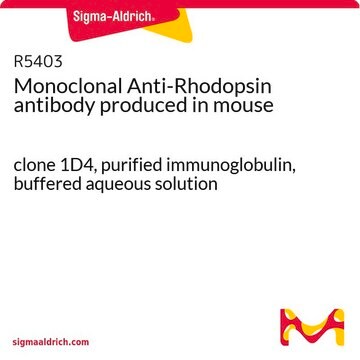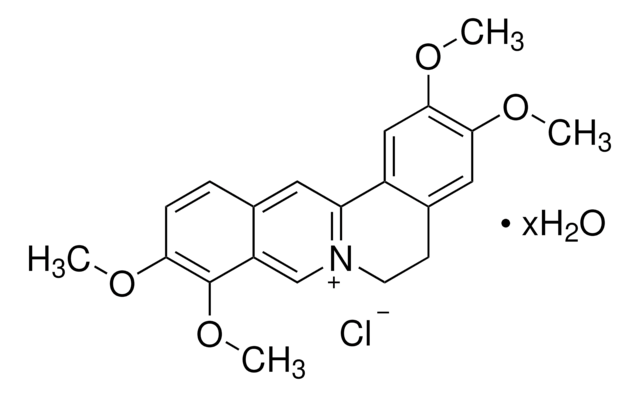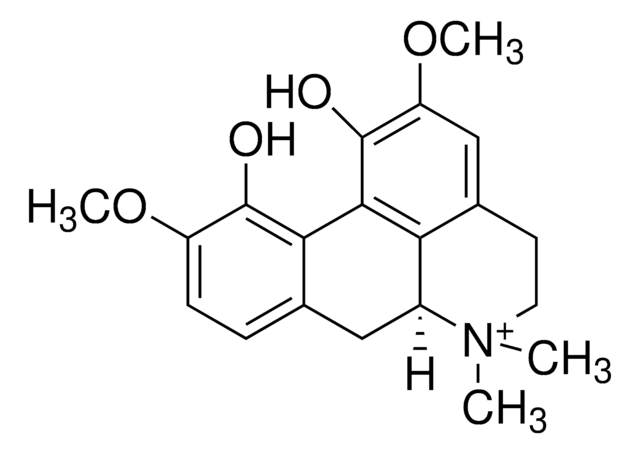About This Item
Recommended Products
Assay
≥98% (HPLC)
solubility
H2O: slightly soluble <0.3 mg/mL
methanol: 3.8 mg/mL
SMILES string
[Cl-].C[n+]1cc2c3OCOc3ccc2c4ccc5cc6OCOc6cc5c14
InChI
1S/C20H14NO4.ClH/c1-21-8-15-12(4-5-16-20(15)25-10-22-16)13-3-2-11-6-17-18(24-9-23-17)7-14(11)19(13)21;/h2-8H,9-10H2,1H3;1H/q+1;/p-1
InChI key
GIZKAXHWLRYMLE-UHFFFAOYSA-M
Application
Biochem/physiol Actions
Signal Word
Warning
Hazard Statements
Precautionary Statements
Hazard Classifications
Acute Tox. 4 Oral
Storage Class Code
11 - Combustible Solids
WGK
WGK 3
Personal Protective Equipment
Certificates of Analysis (COA)
Search for Certificates of Analysis (COA) by entering the products Lot/Batch Number. Lot and Batch Numbers can be found on a product’s label following the words ‘Lot’ or ‘Batch’.
Already Own This Product?
Find documentation for the products that you have recently purchased in the Document Library.
Customers Also Viewed
Our team of scientists has experience in all areas of research including Life Science, Material Science, Chemical Synthesis, Chromatography, Analytical and many others.
Contact Technical Service